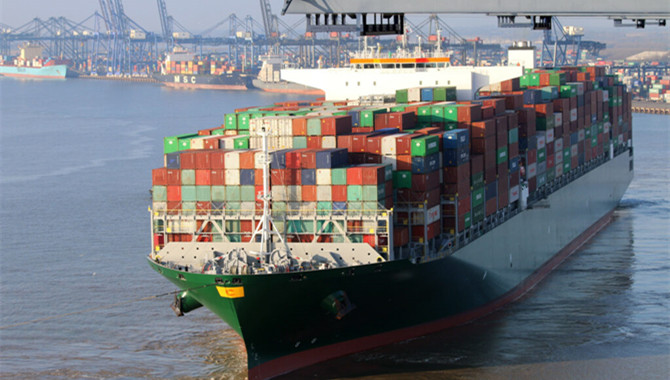Green hydrogen and green hydrogen-derived ammonia are the only scalable fuels that can achieve the emission reduction targets set forth in the Paris Agreement, a new report has found.

Illustration. Courtesy of IMO on Flickr
The report discusses what alternative shipping fuels are already available and what a US transition to those fuels would look like.
To avert the direst consequences of climate change, the global economy needs to be decarbonized rapidly. In most cases, electrification and renewable energy sources present the best path forward.
However, for bulk shipping across the ocean, which is already responsible for 3% of global emissions and poised to grow, zero-emission fuels coupled with energy-saving devices is the best path to decarbonization.
“The United States is primed to lead the way in the transition to green fuels for the maritime sector,” Daniel Hubbell, shipping emissions campaign manager for Ocean Conservancy, pointed out.
“Producing green hydrogen-based fuels can kickstart the transition to new shipping fuels along promising green corridor routes within the U.S. and can make key down payments that will drive further investments in renewable energy and feed the demand for climate action within the global transportation sector.”
Hydrogen and ammonia are two fuels that both have the potential to power shipping vessels while emitting zero greenhouse gases. Green hydrogen fuel is produced by splitting water molecules into hydrogen using renewable energy, whilst nitrogen is separated from the air renewably and added to form green ammonia.
Source: Offshore Energy
The opinions expressed herein are the author's and not necessarily those of The Xinde Marine News.
Please Contact Us at:
media@xindemarine.com


 Ningbo Containerized Freight Index Weekly Commentar
Ningbo Containerized Freight Index Weekly Commentar  Ningbo Containerized Freight Index Weekly Commentar
Ningbo Containerized Freight Index Weekly Commentar  Ningbo Containerized Freight Index Weekly Commentar
Ningbo Containerized Freight Index Weekly Commentar  BIMCO Shipping Number of the Week: Bulker newbuildi
BIMCO Shipping Number of the Week: Bulker newbuildi  Ningbo Containerized Freight Index Weekly Commentar
Ningbo Containerized Freight Index Weekly Commentar  Ningbo Containerized Freight Index Weekly Commentar
Ningbo Containerized Freight Index Weekly Commentar